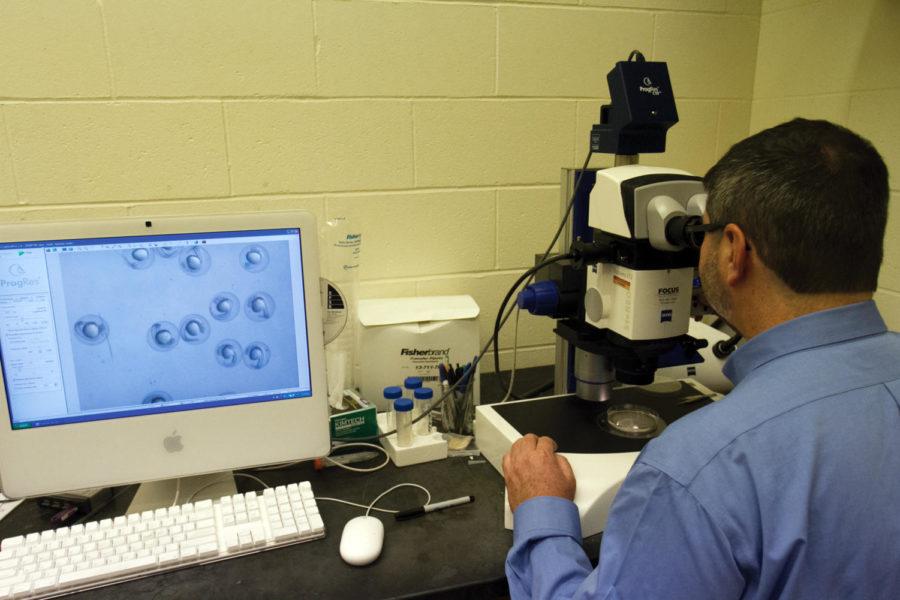Zebrafish genetics give insight into cancer development
October 10, 2012
The fight against cancer might have a new ally: the zebrafish.
ISU scientists Jeffrey Essner and Ying Wang have been using mutated genes in the embryos of zebrafish in order to study the growth of new blood vessels and the development of cancer.
“Angiogenesis directly relates to cancer progression,” said Essner, associate professor of genetics and cell biology. “Angiogenesis is the process whereby new blood vessels are formed from pre-existing blood vessels.”
Understanding angiogenesis and the genes required for the process is a major focus of Essner’s laboratory.
Studying genes that can inhibit angiogenesis will allow scientists to develop therapies to inhibit the process in cancer patients.
“If you have a tumor, it asks for a blood supply,” Essner said. “It’s not going to grow very large until it receives nourishment and oxygen from the bloodstream.”
Essner and Wang are using zebrafish specifically because of how many one-cell stage embryos they can get from one zebrafish. The offspring of the fish also develop outside of the mother so they can be cared for more easily by scientists.
Essner and Wang have contributed to the collaboration by greatly increasing
the efficiency of a technique developed by a group led by Stephen Ekker, a molecular biologist at the Mayo Clinic in Rochester, Minn.
“Not only can we mutate at specific sites, but now Steve Ekker’s group has shown when we repair those sites we can make them have a sequence of DNA; however, we want to engineer that,” Essner said, describing this process as “gene editing.”
Wang, postdoctoral research associate in genetics, development and cell biology described the process he and Essner follow: “We assemble and inject the TALENs, [transcription activator-like effector nucleases,] at the one-cell stage of the embryo. To generate the mutant, we need to grow them up — this generation we call ‘F0.’”
The two had their research published Sept. 23 in the journal “Nature.”
The paper, titled “In vivo genome editing using a high efficiency TALEN system,” lays out their technique to alter genetics.
“For this paper, what we did is inject at two or three days and randomly choose 10 embryos,” Wang said.
The two are also interested in creating conditional alleles, which Essner described simply as “genes that we can engineer so we can turn them on and off at will.”
This technique of cutting out portions of DNA will someday be translatable to other species as well, Essner said, leading to widespread implications for future research, in animals and humans alike. Essner even sees the research developing into a form of gene therapy for humans.
“This is a very powerful technique to ask fundamental questions about gene function.”

















